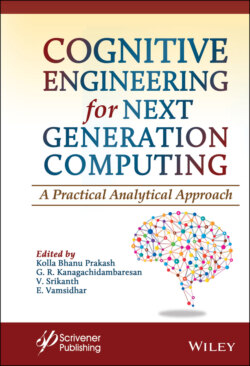Читать книгу Cognitive Engineering for Next Generation Computing - Группа авторов - Страница 46
1.11.1 Hypothesis Generation
ОглавлениеThe hypothesis must be generalized and should map for the unseen cases also. The experiments are developed to test the general unseen case. There are two key ways a hypothesis might be produced in cognitive computing systems. The first is because of an express inquiry from the user, for example, “What may cause my fever and diarrhea?” The system generates all the possible explanations, like flu, COVID where we can see these symptoms. Sometimes the given data is not sufficient and might require some additional input and based on that the system refines the explanations. It might perceive that there are such a large number of answers to be valuable and solicitation more data from the client to refine the arrangement of likely causes.
This way to deal with hypothesis generation is applied where the objective of the model is to recognize the relations between the causes and its effects ex. Medical conditions and diseases. Normally, this kind of psychological framework will be prepared with a broad arrangement of inquiry/ answer sets. The model is trained using the available question and answer sets and generates candidate hypotheses.
The second sort of hypothesis generations doesn’t rely upon a client inquiring. Rather, the system continually searches for atypical information patterns that may demonstrate threats or openings. In this method, hypotheses are generated by identifying a new pattern. For example to detect unauthorized bank transactions the system generated those fraudulent transaction patterns, which became the hypothesis space. Then the cognitive computing model has to find the evidence to support or reject the hypothesis. The hypothesis space is mostly based on assumptions.
The two kinds of hypothesis generation methods produce at least one theory given an occasion, however in the primary case, the event is a client question, and in the second it is driven by similar pattern data.
